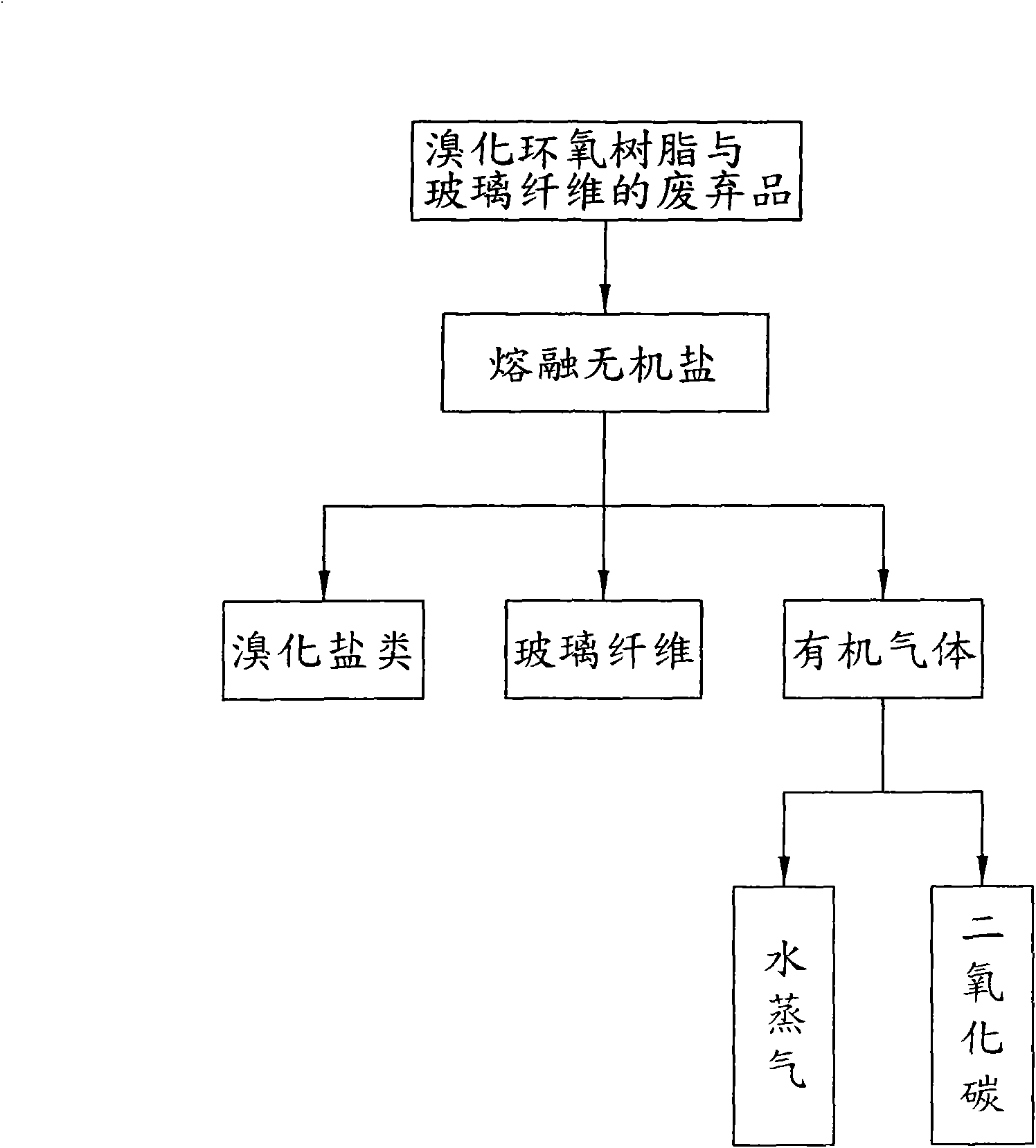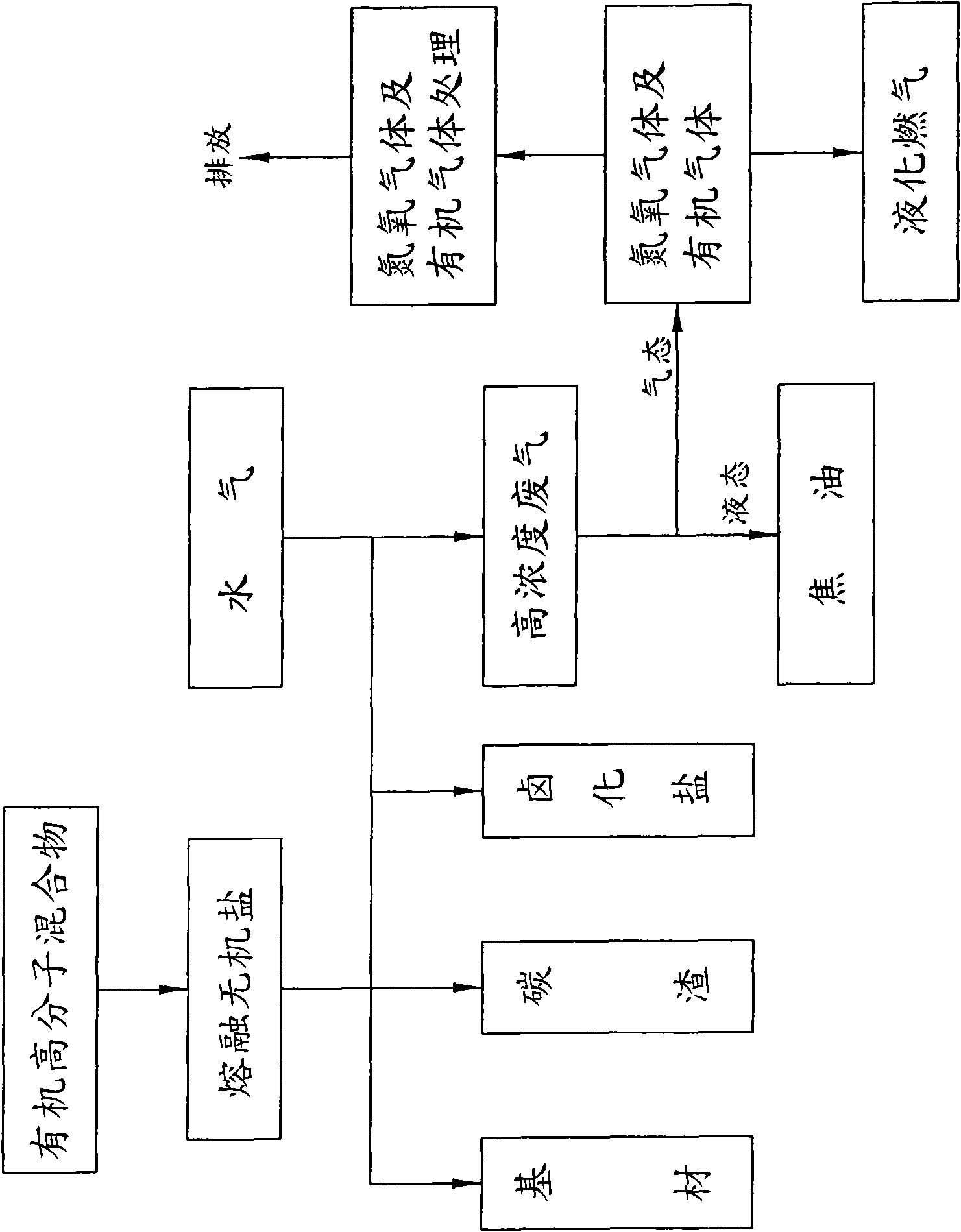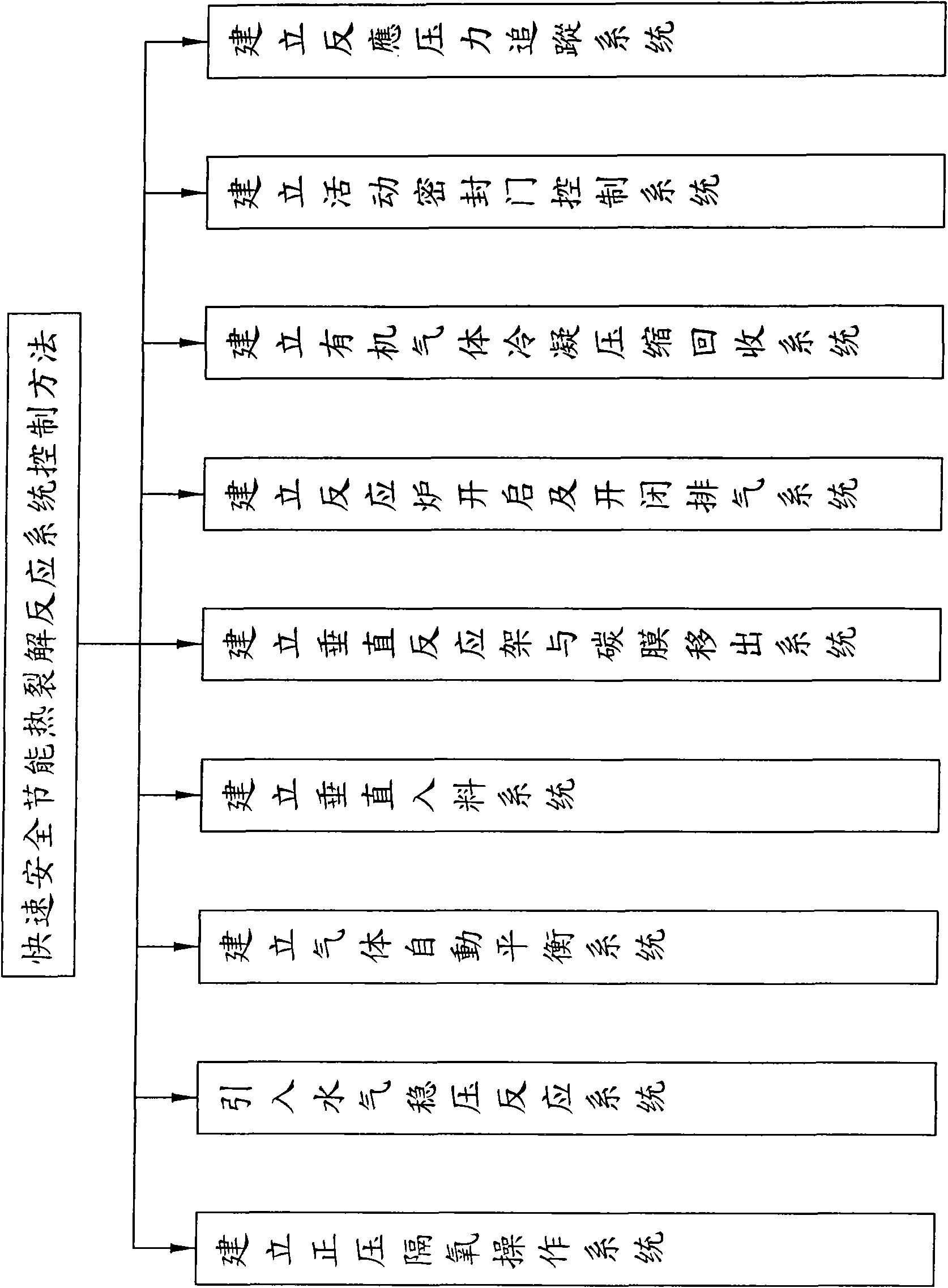Method for recovering base materials in classification by thermally cracking organic polymer mixtures and device thereof
An organic polymer, thermal cracking technology, applied in the direction of plastic recycling, recycling technology, educts, etc., can solve problems such as affecting operation safety, difficult pressure balance control, increasing processing costs, etc., to improve operation safety and reusability. The effect of improving performance and increasing utilization value
- Summary
- Abstract
- Description
- Claims
- Application Information
AI Technical Summary
Problems solved by technology
Method used
Image
Examples
Embodiment Construction
[0055] see figure 2 Shown is the thermal cracking recovery flow chart of the present invention's thermal cracking organic polymer mixture to classify and recover the base material method and its device. The organic polymer mixture is dropped into molten inorganic salt (nitrate or nitrite), and the molten A closed liquid pyrolysis reaction device is formed to heat the polymer, and the pyrolysis of the polymer will form carbon residue, tar, organic gas, etc., and the halogen elements in the polymer will also be released with the thermal cracking, and the highly active metals in the molten salt such as : Lithium, sodium, potassium, rubidium, cesium, and francium will also combine with halogen elements such as fluorine, chlorine, bromine, iodine, and astatine during thermal cracking to form halide salts and nitrogen oxides. During the pyrolysis reaction, not only will the structure of the polymer material be destroyed, but the organic polymer mixture will be decomposed into organ...
PUM
 Login to View More
Login to View More Abstract
Description
Claims
Application Information
 Login to View More
Login to View More - R&D
- Intellectual Property
- Life Sciences
- Materials
- Tech Scout
- Unparalleled Data Quality
- Higher Quality Content
- 60% Fewer Hallucinations
Browse by: Latest US Patents, China's latest patents, Technical Efficacy Thesaurus, Application Domain, Technology Topic, Popular Technical Reports.
© 2025 PatSnap. All rights reserved.Legal|Privacy policy|Modern Slavery Act Transparency Statement|Sitemap|About US| Contact US: help@patsnap.com



